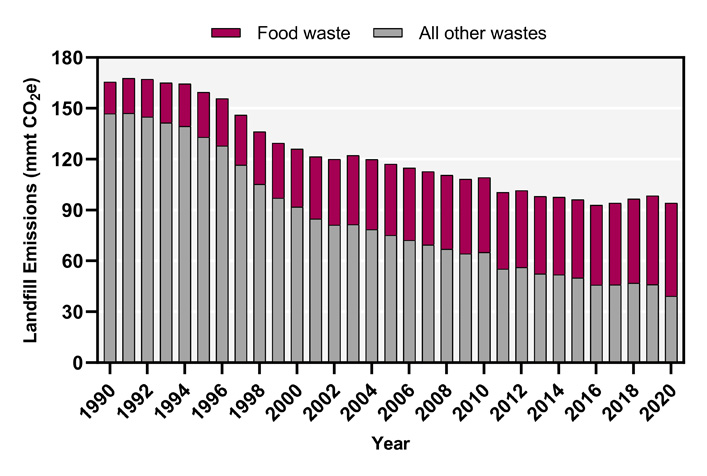Understanding Methane Emissions from U.S. Food Waste

Project Brief
The Challenge
One third of food produced in the United States is never eaten, wasting valuable resources used to produce, transport, and distribute it around the country. When this food is disposed in landfills, it breaks down and produces methane. Recent international and national commitments aim to reduce methane emissions from landfills, where most food waste is sent in the United States. With renewed attention on understanding landfill methane emissions and the risks posed by methane leaks, the U.S. Environmental Protection Agency wanted to understand the impacts of food waste on U.S. landfill emissions.
ERG's Solution
Building off ERG’s decades-long expertise in food waste and emissions estimation/inventory support, our team utilized existing EPA models and data sources to compare the estimates of modeled methane emissions. The Quantifying Methane Emissions from Landfilled Food Waste report is EPA’s first published estimate of annual methane emissions from landfilled food waste and the first peer-reviewed national reference point for the amount of methane emissions attributable to food waste in U.S. municipal solid waste landfills. The analysis found that food waste makes up about 24 percent of waste sent to landfill but is responsible for an estimated 58 percent of fugitive methane emissions—a finding that supports fast action to reduce food waste generation and find diversion and treatment alternatives.
Client
U.S. Environmental Protection Agency